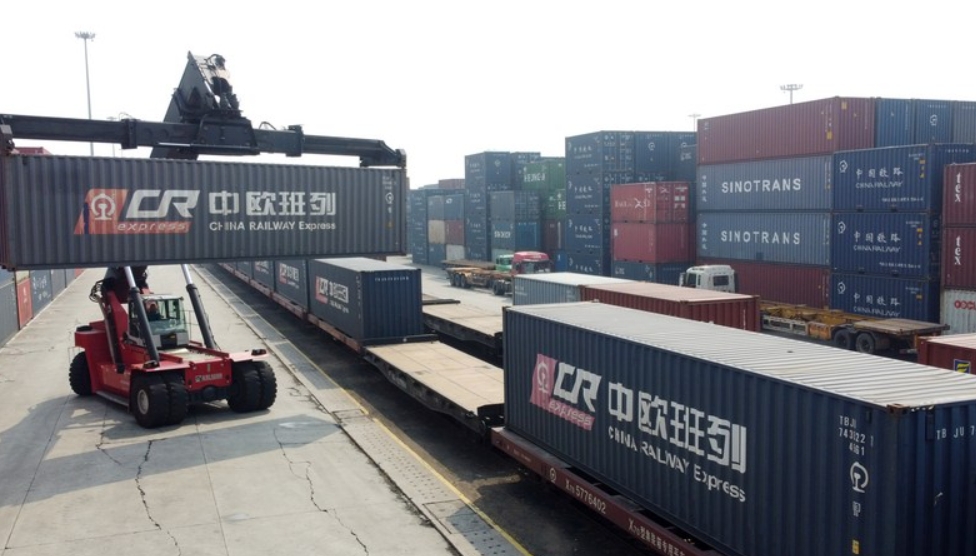Pakistan's economic activity lifted with TIR trade facilitated by CPEC

Every morning, Mohammad Nasir, a 60-year-old supervisor of TIR transport operations in Pakistan's state-owned National Logistics Corporation (NLC), inspects the trucks used in TIR transportation and their fitness certificates, third-party insurance, and the drivers' medical certificates.
As one of the most important members of the pioneer team of TIR transport operation between China and Pakistan, Nasir feels very proud that this initiative is contributing to his country's economic and trade development.
"When our trucks from China reached here, it was a very delightful moment for us. We were very excited because this trade activity is a big development facilitated by the China-Pakistan Economic Corridor (CPEC)," he told Xinhua.
Launched in 2013, CPEC, the flagship project of the China-proposed Belt and Road Initiative (BRI), is a corridor linking the Gwadar port in southwestern Pakistan with Kashgar in northwest China's Xinjiang Uygur Autonomous Region, which highlights energy, transport and industrial cooperation.
Loaded with goods such as walnuts and steel pipes, five vehicles bearing TIR signs reached Pakistan from China's Xinjiang, primarily via Pakistan's road network built under CPEC in recent years.
The first-ever trade activity in Pakistan under the TIR started in 2021, and this year, it began with China as well.
The TIR stands for Transports Internationaux Routiers or International Road Transport. It is an international customs transit system that helps transport operators and customs authorities save time and money when moving goods across borders.
The opening of the TIR is going to give a big boost to the economy of Pakistan, said Nasir Zia, chief operations officer at the NLC, adding that the trade activity with conducive modalities has now started with China, the Central Asian countries and beyond, through the CPEC infrastructure.
This trade was not possible before CPEC because of the low quality of the past road infrastructure, he said.
But now a network of motorways under CPEC, which goes all the way up to the Karakorum Highway (KKH) in Pakistan's northwestern Khyber Pakhtunkhwa province, has made the cross-border trade activity practical, Zia said.
"The China-built roads in the northern areas are among the highest roads being used for trade. It's a miracle that these roads were constructed on northern areas connecting the Khunjerab Pass, a major land port on the China-Pakistan border," he added.
Highlighting the prospects of enhanced connectivity and trade under CPEC and the TIR, Zia noted that the resources of the regional countries are now being tapped.
"Now, this is a mutual interdependence, we are understanding each other's culture and tourism. It's not only the trade; many more things have been connected with CPEC, and dividends are being delivered to the people," he said.
Zia further added that apart from goods like copper, cotton and aluminum, the export of perishable items and seafood to China has also started recently using refrigerated vans.
Elaborating on the TIR trade carried out by the NLC, he said that it was started with an elaborated plan, adding that from a pool of around 6,000 vehicles, 1,200 vehicles are being used for the TIR and regular bilateral trade with China.
"At the moment, we have reached to the level where our wheels are moving 24/7 towards China. Anywhere you move on KKH's CPEC route, you will find the NLC's trucks going towards China or coming back from China," said Zia.
The NLC drivers and the TIR movers are fully accredited by the International Road Transport Union, and the vehicles as well as the drivers are registered with the TIR after meeting all the international requirements, said Ahmed Khan, the NLC's general manager analytics.
Using the continuous tracking and monitoring system, he said that the NLC is closely following the service quality and the delivery time.
"At the moment, using the TIR system and the CPEC route, we are helping to reduce the transit time," he said.
The NLC's trucks that move from China's Xinjiang to Central Asian countries or to Pakistan's southern port city of Karachi take much less amount of time as now they reach from Kashgar to Afghanistan's Kabul in just seven to nine days, which used to take three to four times longer in the past, he added.
"These shipments which had been previously moving by sea were taking more than 30 to 40 days. That means using the CPEC route and the TIR, we are reducing the transit time up to 80 percent," said Khan.
Editor:伏娅敏
